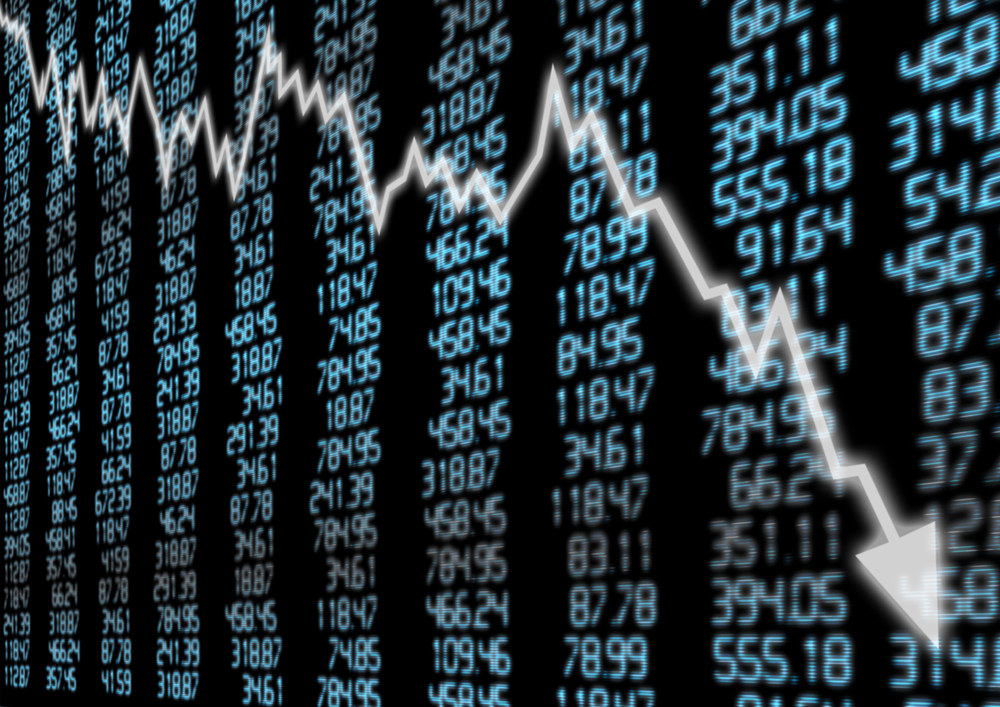
While last year was a staggering year for stocks, this year is shaping up to be a staggering failure for them. At least, it will be if this coronavirus business doesn't get taken into hand at some point here. Underscoring how bad things could get is a new report from Barclay, who's advising not to “buy the dip”, as the dip is likely to continue for some time. Indeed, it also issued an adjusted price target for the S&P 500 that illustrates the dip is likely to keep dipping for a while.
Barclays' Pessimism Looks Kind of Optimistic
Anyone thinking that now is a good time to “buy the dip”—a strategy that calls for investors to pile into stocks following a large-scale drop to take advantage of various bargain-priced stocks—is likely to regret it, Barclays noted. Why? Because the dipping is expected to continue for the short term. Barclays cut its price target from its original 3,300 down to 3,000 for the year, which of itself is actually cause for hope. The S&P 500's current level is 2,858 as of this writing, which means Barclays is expecting a recovery by the end of the year.
Still, given that just a week ago, the S&P 500 was trading up around 3,300—and has actually given back all of the gains seen in 2020 to date as January 2 saw it trading at 3,257.85—reducing the value to 3,000 suggests we've still got a ways to go before seeing the bottom of the dip.
“Very Bad to Mildly Bad” Barclays' Outlook on Coronavirus
Trying to assess the level of damage that COVID-19 coronavirus is likely to cause is difficult, Barclays notes, mainly due to the fact that it hasn't actually stopped causing damage yet. As noted by Barclays Maneesh Deshpande, head of equity derivatives strategy, just containing the virus isn't enough. After such a feat actually happens, then it becomes possible to gauge the impact it's going to have on the supply chain worldwide, resulting in repercussions that are likely to be somewhere between “very bad or mildly bad.”
Barclays further cut earnings estimates on the S&P 500 to $162 per share. Such an estimate, if it comes to pass, would mean profits drop off 2% from 2019's level.
Barclays wasn't alone on the pessimistic track, either; just yesterday, Goldman Sachs brought out an announcement that projected no earnings growth at all for American companies this year. However, most analysts are still holding bullish projections for the S&P 500 in 2020, with a Refinitiv study suggesting earnings will grow 7.7% this year.
The Fallout Might Be the Biggest Problem
Much in the same way it works for nuclear weapons, the problem isn't so much the actual explosion so much as it is the fallout afterward. In this, Barclays has an excellent point. We've already seen how the coronavirus problem is effectively two-fold; not only do we have the disease to deal with, which at last report is still actively killing people, but we have the knock-on effects that follow.
As people eschew crowds and social situations, that means people go shopping less often, and that reduces demand for just about everything. With reduced demand, it follows that sales will also go down, which hurts revenue, profits, and stock prices throughout from there. Tesla (NASDAQ: TSLA) has already seen both sides of this problem first-hand, and it's already well on its way to the biggest one-week drop in stock prices it's ever seen.
So not only do we need to get the virus itself contained, but we also need to pick up the pieces left behind. We need to get a now-skittish consumer who's terrified that going to the mall might end up in catching some kind of horrorshow disease back in play, and get workers—who fear a similar outcome—back on the job too.
We're already seeing some adaptations that may help; Google (NASDAQ: GOOGL) and Microsoft (NASDAQ: MSFT) are said to be shifting production away from China to nearby Vietnam, and both Pixel phones and Surface laptops with the “Made in Vietnam” label should be emerging sometime this year, according to Nikkei Asian Review. These two likely won't be alone in the market much longer, and if production can shift to other facilities, that may help stem some of the losses.
Still, getting COVID-19 under control will be the linchpin in economic success going forward. Any plans to buy the dip, therefore, should be reconsidered in light of the fact that the dip may not be done dipping just yet.
Before you make your next trade, you'll want to hear this.
MarketBeat keeps track of Wall Street's top-rated and best performing research analysts and the stocks they recommend to their clients on a daily basis.
Our team has identified the five stocks that top analysts are quietly whispering to their clients to buy now before the broader market catches on... and none of the big name stocks were on the list.
They believe these five stocks are the five best companies for investors to buy now...
See The Five Stocks Here
Nuclear energy stocks are roaring. It's the hottest energy sector of the year. Cameco Corp, Paladin Energy, and BWX Technologies were all up more than 40% in 2024. The biggest market moves could still be ahead of us, and there are seven nuclear energy stocks that could rise much higher in the next several months. To unlock these tickers, enter your email address below.
Get This Free Report
Like this article? Share it with a colleague.
Link copied to clipboard.